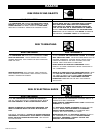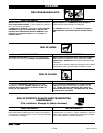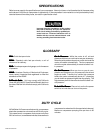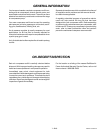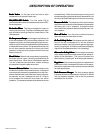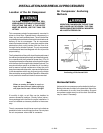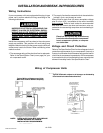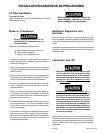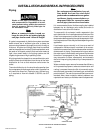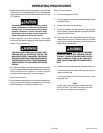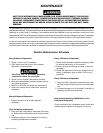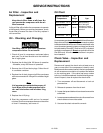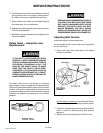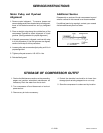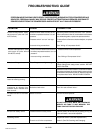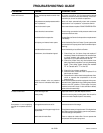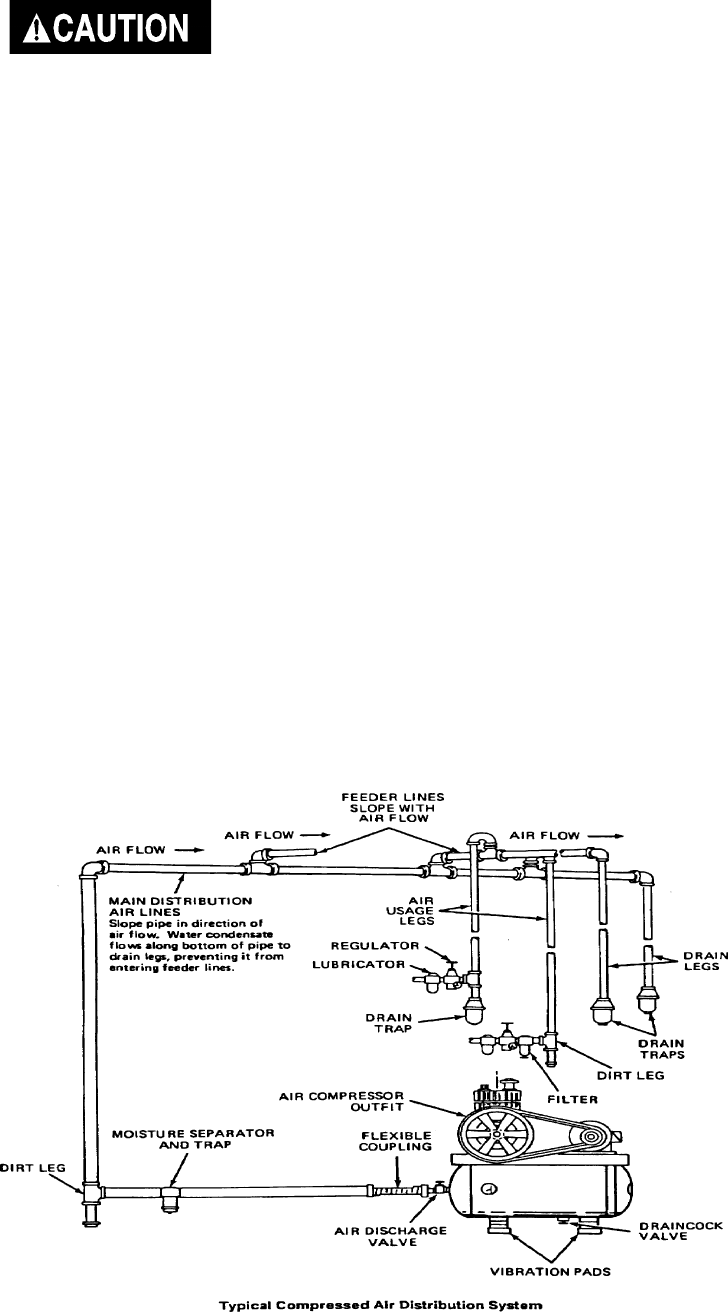
12—ENG
MGP-SL10120H-2A
INSTALLATION AND BREAK-IN PROCEDURES
Piping
NoteNote
NoteNote
Note
For underground installation, bury air
lines below the frost line and avoid
pockets where condensation can gather
and freeze. Apply pressure before un-
derground lines are covered to make
sure all pipe joints are free from leaks.
Plastic or PVC pipe is not designed for use
with compressed air. Regardless of its indi-
cated pressure rating, plastic pipe can burst
from air pressure. Use only metal pipe for
air distribution lines.
NoteNote
NoteNote
Note
Where a remote air intake is used, en-
large the size of the air intake piping by
one pipe size for each 10 feet of length.
A typical compressed air distribution system as shown
below should be of sufficient pipe size to keep the
pressure drop between the supply and point of use to a
minimum. All pipes and fittings used must be certified
safe for the pressures involved. Pipe thread sealant must
be used on all threads, and all joints are to be made up
tight, since small leaks in the piping system are the
largest single cause of high operating costs.
All piping should be sloped to an accessible drain point
and all outlets should be taken from the top of the main
distribution air line so that moisture cannot enter the
outlet.
The main distribution air line should not be smaller than
the compressor air discharge valve outlet. A smaller line
will restrict the flow of air. If piping is over 100 feet long,
or if required air flow will exceed 15 SCFM, use 3/4"
piping.
It is recommended that a flexible coupling be installed
between the air discharge valve outlet and main air
distribution line to allow for vibration.
To remove dirt, oil and water, install a separator in the
main distribution line. Install separator a minimum of 5 to
6 feet from compressor to allow the air to cool to room
temperature before passing through the separator. Addi-
tional separators or filters may be used depending on the
application.
Liquid water occurs naturally in air lines as a result of
compression. Moisture vapor in ambient air is concen-
trated when pressurized and condenses when cooled in
downstream air piping. Compressed air dryers reduce
the water vapor concentration and prevent liquid water
formation in compressed air lines. Dryers are a neces-
sary companion to filters, aftercoolers, and automatic
drains for improving the productivity of compressed air
systems.
Water and water vapor removal increases the efficiency
of air operated equipment, reduces contamination and
rusting, increases the service life of pneumatic equip-
ment and tools, prevents air line freeze-ups, and reduces
product rejects. The use of dryers and filters are recom-
mended when these moisture related problems are
reported to our factory or distributor service department.



